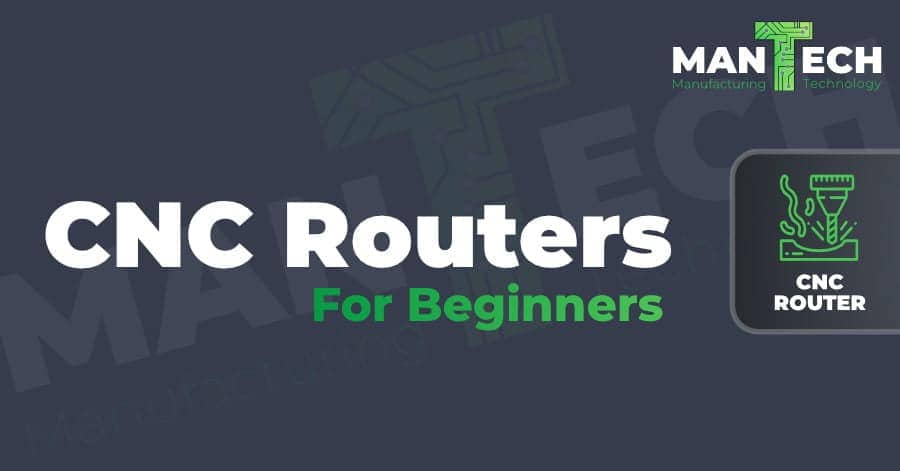CNC Routers for beginners

CNC Routers for Beginners: Unlocking Precision and Creativity
By Mantech Machinery UK, CNC Router Suppliers across the Nation.
Embarking on the journey of CNC (Computer Numerical Control) routing can seem daunting for beginners. However, understanding the fundamentals and benefits of CNC routers can open up a world of precision and creativity in various projects. This guide will help you get started with CNC routers, from understanding how they work to practical steps for using them efficiently.
Embarking on the journey of CNC (Computer Numerical Control) routing can seem daunting for beginners. However, understanding the fundamentals and benefits of CNC routers can open up a world of precision and creativity in various projects. This guide will help you get started with CNC routers, from understanding how they work to practical steps for using them efficiently.
Understanding CNC Routers

A CNC router is a computer-controlled machine designed to cut, carve, and engrave materials such as wood, plastics, metals, and foams. Unlike traditional hand-held routers, CNC routers follow precise digital designs created using CAD (Computer-Aided Design) software, ensuring consistent and accurate results. These machines allow users to automate intricate designs, making them invaluable for hobbyists, small businesses, and large-scale manufacturers alike.
For a deeper understanding of CNC routers, you can refer to this in-depth CNC beginner’s guide.
How Do CNC Routers Work?
1 Designing the Project: The process begins with designing the desired object using CAD software.
2 Generating Toolpaths: The design is converted into a set of instructions (G-code) through CAM (Computer-Aided Manufacturing) software.
3 Executing the Cut: The CNC router interprets this code to control the movement of the cutting tool along multiple axes, shaping the material accordingly.
2 Generating Toolpaths: The design is converted into a set of instructions (G-code) through CAM (Computer-Aided Manufacturing) software.
3 Executing the Cut: The CNC router interprets this code to control the movement of the cutting tool along multiple axes, shaping the material accordingly.
⠀To better understand G-code programming, check out this G-code tutorial.
Benefits for Beginners
Precision and Consistency: CNC routers can reproduce designs with incredible accuracy, reducing human error.
Versatility: They work with various materials, including wood, plastics, aluminum, and composites, allowing for a wide range of applications.
Efficiency: Automation minimizes manual labor and speeds up production, enabling complex designs to be realized faster and with greater detail.
Cost-Effectiveness: While an initial investment is required, CNC routers help reduce material waste and increase production efficiency over time.
Versatility: They work with various materials, including wood, plastics, aluminum, and composites, allowing for a wide range of applications.
Efficiency: Automation minimizes manual labor and speeds up production, enabling complex designs to be realized faster and with greater detail.
Cost-Effectiveness: While an initial investment is required, CNC routers help reduce material waste and increase production efficiency over time.
Getting Started: A Step-by-Step Guide
1 Learn the Basics: Familiarize yourself with CNC terminology and operations. This beginner’s CNC guide is a great place to start.
2 Choose the Right Machine: Select a CNC router suited for beginners based on the materials you plan to work with and your budget.
3 Master the Software: Learn to use CAD/CAM software. Many beginners start with free or open-source options before transitioning to professional-grade programs.
4 Start Small: Begin with simple projects such as engraving nameplates or cutting basic shapes before moving on to complex 3D carvings.
5 Join a Community: Engage with online forums and local workshops for support, project ideas, and troubleshooting assistance. Useful communities include CNCZone and Reddit’s CNC Community.
2 Choose the Right Machine: Select a CNC router suited for beginners based on the materials you plan to work with and your budget.
3 Master the Software: Learn to use CAD/CAM software. Many beginners start with free or open-source options before transitioning to professional-grade programs.
4 Start Small: Begin with simple projects such as engraving nameplates or cutting basic shapes before moving on to complex 3D carvings.
5 Join a Community: Engage with online forums and local workshops for support, project ideas, and troubleshooting assistance. Useful communities include CNCZone and Reddit’s CNC Community.
Essential Tools and AccessoriesGetting Started: A Step-by-Step Guide
Router Bits: Choosing the right bit type (end mills, V-bits, ball nose) is crucial for achieving the best results.
Workholding Clamps: Secure your material to the worktable to prevent shifting during operation. Especially useful for warped materials. Our range of CNC Routers come with both vacuum and clamp holding facilities.
Dust Collection System: Reduces debris buildup and improves the longevity of your machine.
Safety Gear: Safety glasses, ear protection, and gloves are recommended when operating a CNC router.
Workholding Clamps: Secure your material to the worktable to prevent shifting during operation. Especially useful for warped materials. Our range of CNC Routers come with both vacuum and clamp holding facilities.
Dust Collection System: Reduces debris buildup and improves the longevity of your machine.
Safety Gear: Safety glasses, ear protection, and gloves are recommended when operating a CNC router.
Safety Considerations
Operating a CNC router requires proper safety precautions:
Wear Protective Gear: Safety glasses and hearing protection are essential when operating a CNC machine.
Secure Your Material: Ensure the workpiece is properly clamped to prevent movement during operation.
Understand Feed and Speed Settings: Using improper settings can cause tool breakage, material damage, or machine wear.
Perform Regular Maintenance: Clean the machine and inspect components such as drive belts and spindle bearings regularly.
Wear Protective Gear: Safety glasses and hearing protection are essential when operating a CNC machine.
Secure Your Material: Ensure the workpiece is properly clamped to prevent movement during operation.
Understand Feed and Speed Settings: Using improper settings can cause tool breakage, material damage, or machine wear.
Perform Regular Maintenance: Clean the machine and inspect components such as drive belts and spindle bearings regularly.
Conclusion
Venturing into CNC routing as a beginner is a rewarding endeavour that blends technology with craftsmanship. By understanding the basics, selecting the right tools, and engaging with the CNC community, you can unlock new levels of precision and creativity in your projects. With practice, patience, and the right resources, CNC routers can empower you to bring your ideas to life with accuracy and efficiency.
CNC Routers




